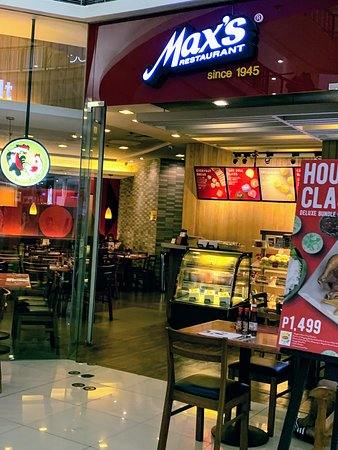Every country has its own fried chicken hero. In America, it is Colonel Sanders in his white suit and creepy grin. In Korea, it is all about double-fried wings and beer. And in the Philippines, that hero is a man named Maximo Gimenez, who gave birth to the proudly Filipino chain known as Max’s Restaurant. Or, as they like to call it, “the house that fried chicken built.”
Now, when I first saw that slogan, I had questions. A house built by fried chicken? Really? The only man I ever knew who built an empire from fried chicken wore a white suit and came from Kentucky. So naturally, I assumed Max’s was another KFC wannabe, just like how every other Asian chain seems to have its own version of the Colonel’s secret recipe. But it turns out, Max’s is different. Its roots run deep into post-war Philippines, and its story is tied to both American soldiers and Filipino hospitality.
The Origins of Max’s Restaurant

The story begins in 1945, when the smoke of the Second World War had just cleared over Manila. The Japanese had packed their bags, and the Americans were stationed around the city, enjoying their brief victory lap. Among the many who welcomed them was a friendly Filipino gentleman named Maximo Gimenez.
Maximo wasn’t a chef or a restaurateur. He was just a man with a house, some charm, and a soft spot for good company. He often invited the American soldiers over for drinks and meals. What started as friendly visits soon became a regular hangout spot for homesick GIs. Eventually, the soldiers felt guilty about eating and drinking for free all the time and insisted on paying. And that was when Maximo had his lightbulb moment.
He decided to open a small café and asked his niece Ruby to handle the cooking. Ruby, it turns out, was a bit of a culinary wizard. She came up with a special way of preparing fried chicken that was unlike anything the soldiers had tasted before. It wasn’t heavily battered or greasy like American fried chicken. Instead, it was crisp on the outside, juicy on the inside, and seasoned with a mix of Filipino and Western flavors.
That secret recipe turned the little family café into something much bigger. Max’s Restaurant was born. Over the decades, it grew from one humble post-war eatery into a national chain. By the late 1990s, Max’s had gone full franchise, and now you can find more than 120 branches across the Philippines, as well as outlets in cities across the USA and Canada. And yes, it is still managed by the same family that started it all.
The Food at Max’s
Let us talk about the important bit: the food. Max’s has a surprisingly big menu. While fried chicken is the star, the supporting cast is very Filipino. You will find all the local classics here, sizzling sisig, adobo, kare-kare, pancit, and plenty of dishes designed to go with rice and beer. They even serve bottles of San Miguel, which instantly makes it more legit than your average mall chain.
When I visited, I went straight for the signature half fried chicken. It is served without batter, just marinated skin-on chicken fried until golden. The plate came with plantain fries and the signature Filipino sidekick – banana ketchup. If you have never tried banana ketchup before, it is basically sweet tomato ketchup’s weird tropical cousin. Max’s version comes with a good kick of tang, especially when mixed with hot sauce.
The chicken itself? It was good. Not life-changing, but good. Crispy outside, tender inside, and light enough that you do not feel like you just swallowed a bucket of oil. The plantain fries were a pleasant surprise – slightly sweet, nicely fried, and a welcome change from the usual greasy potato fries you get everywhere else.

So, is Max’s worth it?
Max’s Restaurant is one of those places that sits neatly between nostalgia and comfort food. For Filipinos, it is a taste of home, a reminder of family dinners and post-Sunday-mass meals. For travelers, it is a window into Filipino-style hospitality and how the country took a foreign concept – fried chicken – and made it its own.

It might not have the global power or addictive saltiness of KFC, but it has something Colonel Sanders never did: a real story. A war veteran’s house turned into a restaurant, a family-run success story that stayed local before going global, and a menu that actually reflects Filipino flavors rather than just copying Western fast food.
So if you find yourself wandering through a Philippine mall or stopping at a gas station outside Manila, do yourself a favor and pop into Max’s. Order the fried chicken, grab a cold beer, and dunk those fries in banana ketchup. You might not walk out converted, but you will walk out satisfied.
Long live the house that fried chicken built. And long live the Colonel’s only real rival in Asia.
Click to see my Phlippines Tours with Young Pioneer Tours

